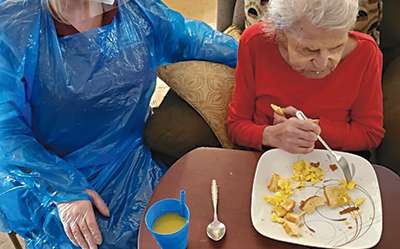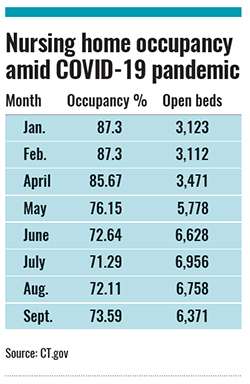
Processing Your Payment
Please do not leave this page until complete. This can take a few moments.
-
News
-
Editions
-
- Lists
-
Viewpoints
-
HBJ Events
-
Event Info
- 2024 Economic Outlook Webinar Presented by: NBT Bank
- Best Places to Work in Connecticut 2024
- Top 25 Women In Business Awards 2024
- Connecticut's Family Business Awards 2024
- What's Your Story? A Small Business Giveaway 2024 Presented By: Torrington Savings Bank
- 40 Under Forty Awards 2024
- C-Suite and Lifetime Achievement Awards 2024
- Connecticut's Health Care Heroes Awards 2024
-
-
Business Calendar
-
Custom Content
- News
-
Editions
View Digital Editions
Biweekly Issues
- April 29, 2024
- April 15, 2024
- April 1, 2024
- March 18, 2024
- March 4, 2024
- February 19, 2024
- February 5, 2024
- January 22, 2024
- January 8, 2024
- + More
Special Editions
- Lists
- Viewpoints
-
HBJ Events
Event Info
- View all Events
- 2024 Economic Outlook Webinar Presented by: NBT Bank
- Best Places to Work in Connecticut 2024
- Top 25 Women In Business Awards 2024
- Connecticut's Family Business Awards 2024
- What's Your Story? A Small Business Giveaway 2024 Presented By: Torrington Savings Bank
- 40 Under Forty Awards 2024
- C-Suite and Lifetime Achievement Awards 2024
- Connecticut's Health Care Heroes Awards 2024
Award Honorees
- Business Calendar
- Custom Content
Demand for home health care surges amid COVID-19, shifting industry landscape

The call came in before the surgery even started — could a relative be cared for in her home while she recovered from a hip replacement?
A year ago, the patient would likely have spent a few weeks in a rehab setting, like a nursing home. But this year, Ann Wilson, client services manager at Companions & Homemakers, was getting a lot of calls.
“The doctor was working with the family and the client wanted to be able to come home,” Wilson said.
The homecare agency was able to provide a caregiver who would help the patient with daily tasks and stay overnight in case she needed to get up.
“That was an option that was able to be available so she could come home quickly and not have to go into a rehab setting,” Wilson said.
Farmington-based Companions & Homemakers has seen a 20% surge in referrals since the start of the COVID-19 pandemic as patients increasingly seek to recover at home — and older people and the disabled search for alternatives to institutional care, where coronavirus infections and deaths have occurred at a higher rate, particularly earlier in the year.

In fact, of the 3,757 COVID-19-related deaths in Connecticut since March, more than half have occurred at nursing homes.
That has intensified demands for home care as the population continues to age, Wilson said. About 10,000 members of the Baby-Boom generation turn 65 every day, and the number of Americans in the 65-plus age group is expected to double by 2030.
“The demand for home care, or for options for people to be able to age in place at home, has continued to increase,” Wilson said.
Trend toward home
The boom for homecare agencies tracks with a drop in the census at nursing homes as the facilities continue to be a focus of pandemic concerns.
In Connecticut, monthly occupancy rates at nursing homes fell through the spring and summer, according to Department of Social Services data, dropping from a high of 87.8% in March to a low of 71.3% in July, with a slight rebound in the last few months to 73.6% in September. In 2019, by contrast, occupancy held steady, averaging 87.5% based on quarterly surveys.
The number of open beds at nursing facilities statewide has more than doubled since the beginning of the year, standing at 6,371 in September. The vacancies come as more nursing homes close — three so far this year with a cumulative loss of 380 beds.

The pandemic has added to trends favoring home care in all its forms as an alternative to institutions, said Tracy Wodatch, president and CEO of the Connecticut Association for Healthcare at Home. The Wallingford-based group represents 60 out of the 90 agencies in the state that provide licensed and certified medical home care, along with 30 firms that provide homemaker and companion services, which are monitored by the Department of Consumer Protection.
“We’re definitely seeing more than ever during the pandemic home-based care has come to the forefront as a way to keep people at home, especially those at highest risk for the virus,” Wodatch said.
Many of the companies that are part of the association are reporting sharp spikes in referrals and difficulty staffing all the requests for care, she added. Adding to the challenges are the number of caregivers who had retired or changed careers due to the pandemic and its demands. The flexibility of home care has made it attractive to nurses and other health aides in the past but many are choosing to sit out the pandemic.
“We have a positive on that side where we can recruit professionals to come work for us but at the same time we’ve seen a rise in professionals leaving health care because of the pandemic,” Wodatch said.
At all levels of home care, compensation is constrained by Medicare reimbursements from the state, an issue the association is pushing to the forefront as demand increases.
“For us to be a viable option, we really need to come to the table with the state agencies and governor’s office and have our sustainability addressed through adequate rates,” Wodatch said. “If we’re not adequately funded to pay our staff that minimum wage and still sustain our business we can’t keep providing those services.”
The pandemic may also lead to more federal reimbursement for homecare providers, according to Home Health Care News. Although the Centers for Medicare & Medicaid Services opened up Medicare Advantage (MA) to home care in 2019, few plans have offered homecare benefits.
“COVID-19 has added fuel to the fire, which will likely lead to an explosion of MA and other federal payment opportunities for homecare providers in the years to come,” Home Health Care News said.
Help wanted
Bonuses and free rides to assignments via Lyft and Uber are helping to keep employees at Companions & Homemakers on the job. In addition, 300 of the firm’s workers volunteered to provide care for those suffering from complications of COVID-19, Wilson said.
The private, family-owned firm employs 2,500 people across the state to provide non-medical care.

“Recruiting and bringing on good quality people is always an ongoing challenge,” Wilson said. At the start of the pandemic, the company convened a task force to ensure worker safety along with helping them handle increased demands on their time and energy.
“It was new and trying times for everybody,” Wilson said.
Keeping good workers happy is a preoccupation of the homecare industry, Wodatch said, reflecting the tight hiring market.
Nationwide, home health services have seen boosts in employment since the pandemic, up by 16,000 jobs in September and 12,000 jobs in August, according to the U.S. Bureau of Labor Statistics. Nursing homes, by contrast, lost 9,000 jobs in October alone.
At 36.5%, homecare aides had the highest turnover rate of all home health positions in 2020, compared to 25.4% in 2019, according to the Home Care Salary & Benefits Report. The churn increased despite a 2.8% bump in national average base pay for homecare aides from Aug. 2019 to July 2020, the report said.
In response to ongoing hiring challenges, the Connecticut Association for Healthcare at Home has created a workforce task force to strengthen pre-hire training in home care, nursing and social work.
“They’re all needed,” Wodatch said. “It’s important for us to make sure their preparation and education is solid and [home care] is something we can market as a viable career.”

2022 Giving Guide
This special edition informs and connects businesses with nonprofit organizations that are aligned with what they care about. Each nonprofit profile provides a crisp snapshot of the organization’s mission, goals, area of service, giving and volunteer opportunities and board leadership.
Learn more
Subscribe
Hartford Business Journal provides the top coverage of news, trends, data, politics and personalities of the area’s business community. Get the news and information you need from the award-winning writers at HBJ. Don’t miss out - subscribe today.
Subscribe
2024 Book of Lists
Delivering Vital Marketplace Content and Context to Senior Decision Makers Throughout Greater Hartford and the State ... All Year Long!
Read Here-
2022 Giving Guide
This special edition informs and connects businesses with nonprofit organizations that are aligned with what they care about. Each nonprofit profile provides a crisp snapshot of the organization’s mission, goals, area of service, giving and volunteer opportunities and board leadership.
-
Subscribe
Hartford Business Journal provides the top coverage of news, trends, data, politics and personalities of the area’s business community. Get the news and information you need from the award-winning writers at HBJ. Don’t miss out - subscribe today.
-
2024 Book of Lists
Delivering Vital Marketplace Content and Context to Senior Decision Makers Throughout Greater Hartford and the State ... All Year Long!
ABOUT
ADVERTISE
NEW ENGLAND BUSINESS MEDIA SITES
No articles left
Get access now
In order to use this feature, we need some information from you. You can also login or register for a free account.
By clicking submit you are agreeing to our cookie usage and Privacy Policy
Already have an account? Login
Already have an account? Login
Want to create an account? Register
Get access now
In order to use this feature, we need some information from you. You can also login or register for a free account.
By clicking submit you are agreeing to our cookie usage and Privacy Policy
Already have an account? Login
Already have an account? Login
Want to create an account? Register






0 Comments